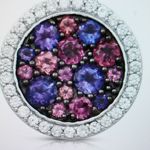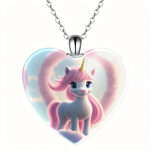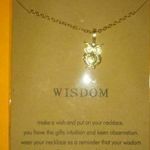FREE: GORGEOUS Hand-Tatted Victorian 'Diamond' Crystal Wedding Choker

A member of Listia gave this away for free!
Do you want FREE stuff like this?
Listia is 100% Free to use
Over 100,000 items are FREE on Listia
Declutter your home & save money

"Listia is like EBay, except everything is free" - Los Angeles Times

"An Awesome Way To Give And Get Free Stuff" - Michael Arrington, TechCrunch
This Stuff is Free Too:

FREE

FREE

FREE

FREE

FREE
The listing, GORGEOUS Hand-Tatted Victorian 'Diamond' Crystal Wedding Choker has ended.
This is the perfect choice for a necklace for a bride-to-be, especially if she is allergic to metal.I latched on to an old Victorian 'edging' pattern and it was just too beautiful to not use as a 'lace' choker done with fine needle tatting using 100% tatting thread (high-quality Lydia).
It is approximately 17" long and each 'cluster' is embedded with an authentic VINTAGE, foil-backed aroura borealis (rainbow spectrum) rhinestone crystal.
To wear:
1. My tatted chokers are meant to fit all (and it's easier to have them longer than shorter) so that the ends can be overlapped and a brooch used pinned in front as a focal point.
2. Ends are folded back to fit and a button, snap(s) or hook/eye(s) sewn to the ends for closure (it's easier to close in front and then spin the closure to the back).
This piece absolutely incorporates "something old" and can be easily customized by adding a locket or other pendant either by sewing or using metal rings.
I do also take orders and put my chokers on Listia so that interested bidders have an opportunity to bid on a popular item or an item by request. I had to really think about this because if one person wants something made a certain way, chances are there are other people who would like it, too.
History of Needle Tatting: Needle tatting originated in the early twentieth century, but did not become popular until much later. A tatting needle is a long, blunt needle that does not change thickness at the eye of the needle. The needle used must match the thickness of the thread chosen for the project. Rather than winding the shuttle, the needle is threaded with a length of thread. To work with a second color, a second needle is used.Although needle tatting looks similar to shuttle tatting, it differs in structure and is slightly thicker and looser because both the needle and the thread must pass through the stitches. (Wikipedia)
GORGEOUS Hand-Tatted Victorian 'Diamond' Crystal Wedding Choker is in the Jewelry & Watches | Necklaces category

